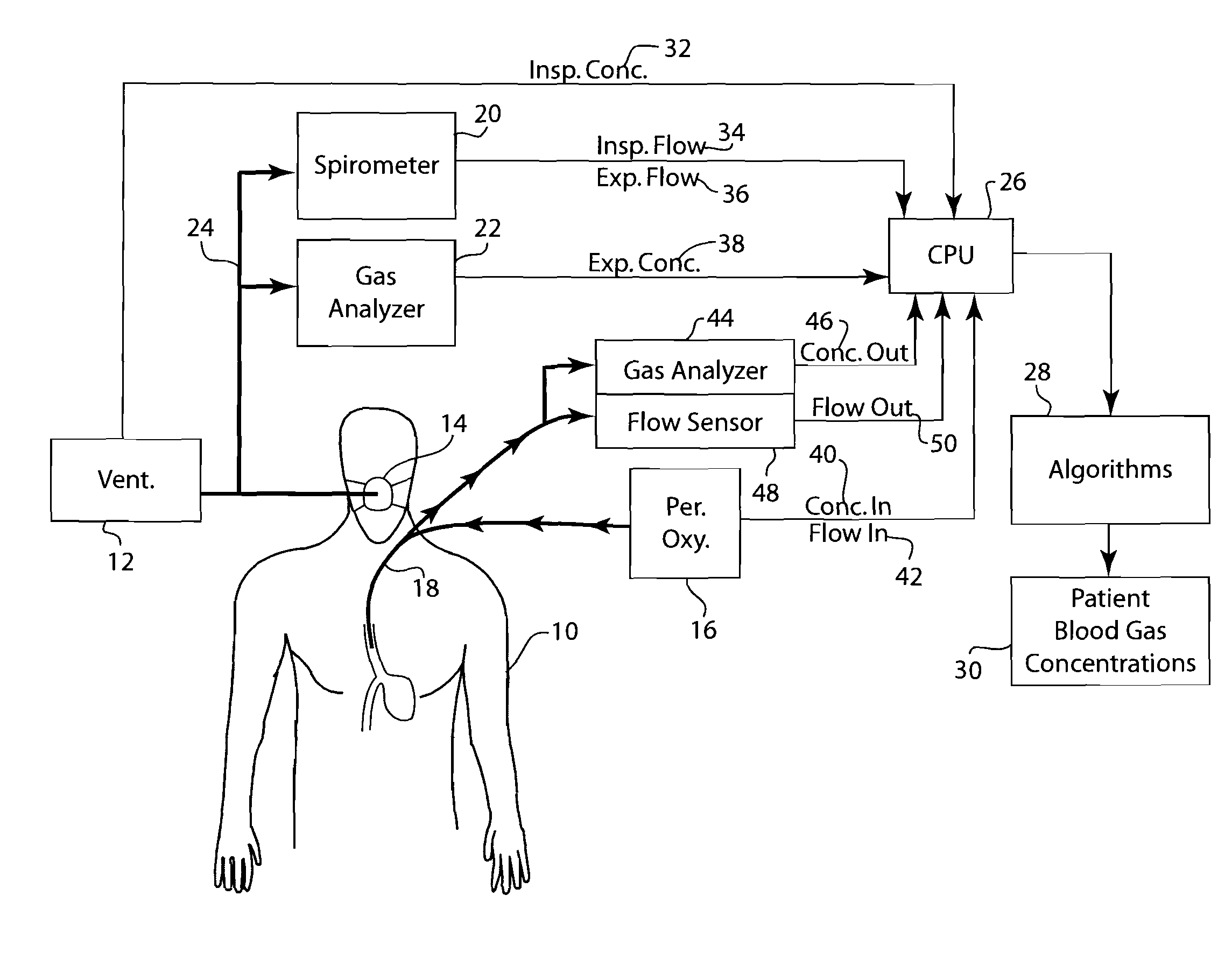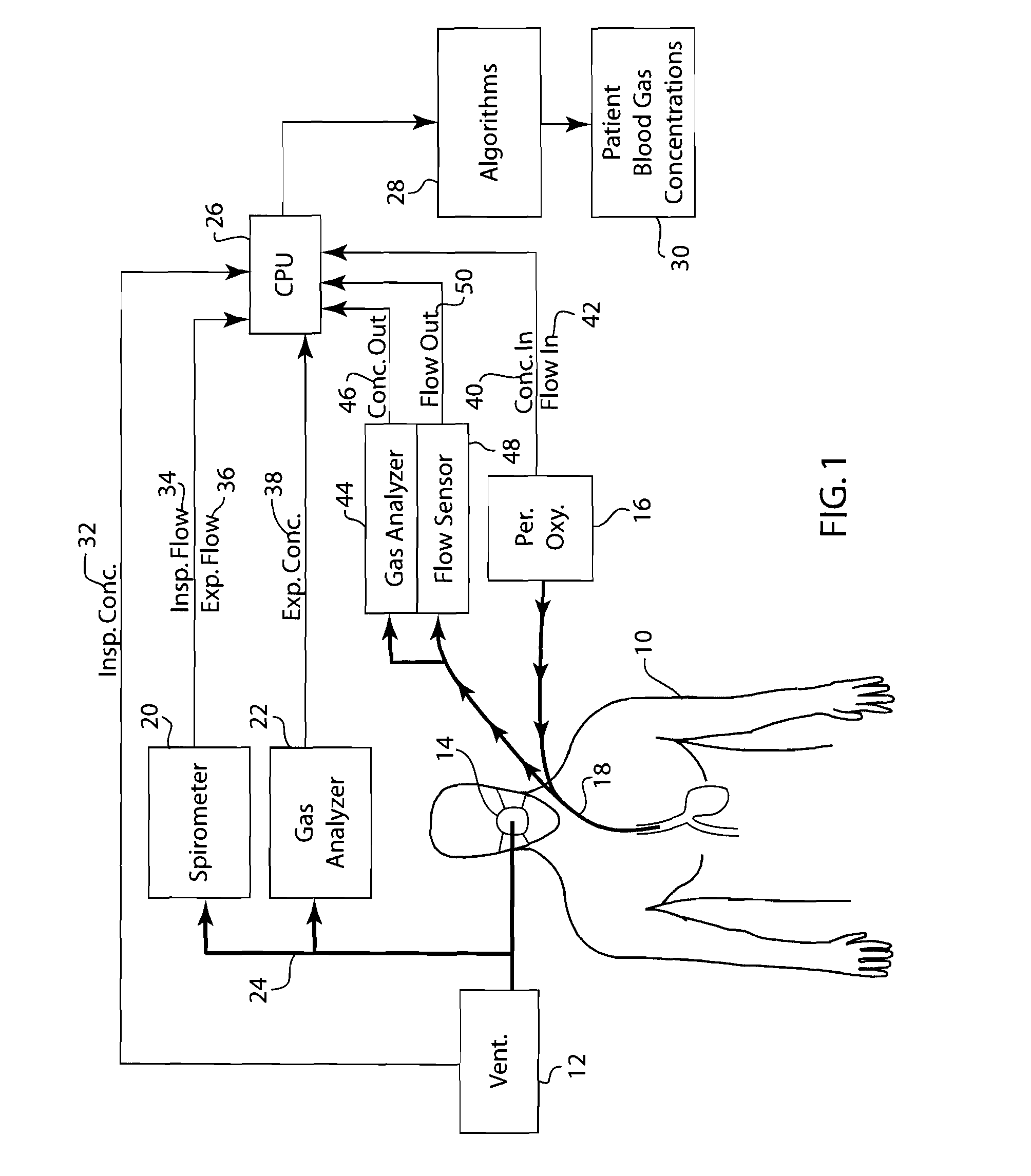Non-invasive determination of cardiac output, gas exchange and arterial blood gas concentration
a blood gas concentration and non-invasive technology, applied in the field of blood gas monitoring, can solve the problems of increased cardiac stress on patients, lung injury, and no percutaneous oxygenator is able to fully provide the necessary oxygenation
- Summary
- Abstract
- Description
- Claims
- Application Information
AI Technical Summary
Benefits of technology
Problems solved by technology
Method used
Image
Examples
Embodiment Construction
[0012]FIG. 1 depicts a schematic diagram of a patient receiving both mechanical ventilation as well as percutaneous oxygenator support. The patient 10 receives mechanical ventilation support from a ventilator 12 via a patient interface 14 such as a face mask or endotracheal tube. The patient's mechanical ventilation support is augmented by a percutaneous oxygenator 16 which introduces an additional supply of oxygen to the patient venous blood via a gas exchange catheter 18 which is inserted into the patient's superior or inferior vena cava.
[0013]In a typical clinical setting where a patient is undergoing mechanical ventilation support the ventilator 12 is used in conjunction with a spirometer 20 and a gas analyzer 22 which receive samples of the gas inspired and expired by the patient 10 via a gas sampling tube 24. Alternatively, mainstream gas analyzers that measure gas concentration directly from the patient gas stream without having the gases sampled via a tube may also be used. ...
PUM
 Login to View More
Login to View More Abstract
Description
Claims
Application Information
 Login to View More
Login to View More - R&D
- Intellectual Property
- Life Sciences
- Materials
- Tech Scout
- Unparalleled Data Quality
- Higher Quality Content
- 60% Fewer Hallucinations
Browse by: Latest US Patents, China's latest patents, Technical Efficacy Thesaurus, Application Domain, Technology Topic, Popular Technical Reports.
© 2025 PatSnap. All rights reserved.Legal|Privacy policy|Modern Slavery Act Transparency Statement|Sitemap|About US| Contact US: help@patsnap.com



